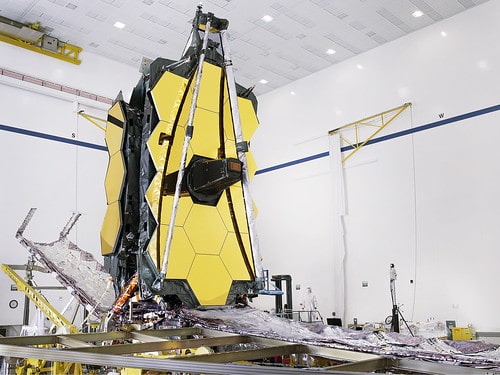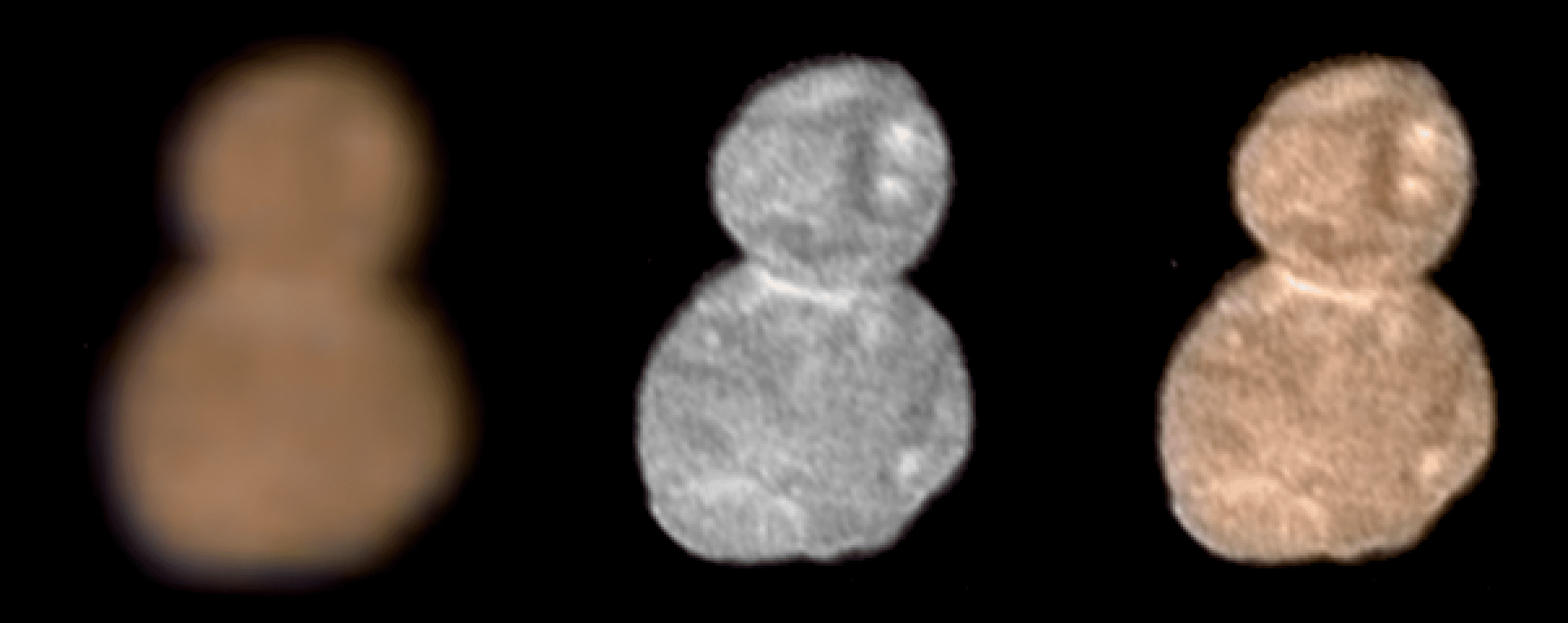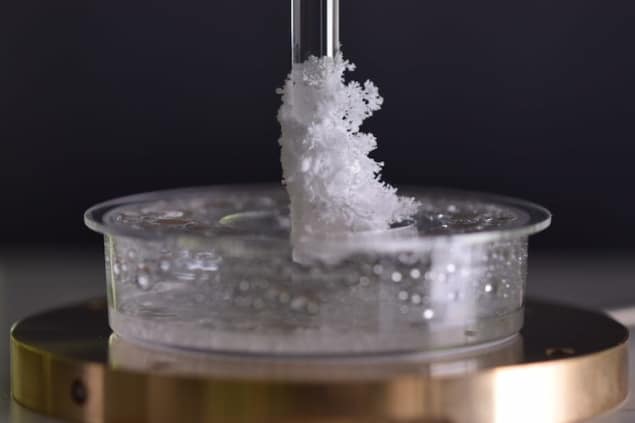Flexible contact lenses that incorporate supercapacitors and wireless-charging components are now possible, thanks to newly formulated printable inks that serve as the electrode and electrolyte. Researchers in the Republic of Korea showed that a specific mixture of carbon molecules, polymers and solvent can be used to print a supercapacitor’s electrodes onto a lens with micron-scale precision via a technique called direct ink writing. The same process deposits a UV-cured ionic liquid that functions as the supercapacitor’s electrolyte. As a proof-of-concept, the work could one day lead to smart contact lenses with sensors for health monitoring, or with integrated displays for augmented reality applications (Science Advances 10.1126/sciadv.aay0764).
While smart glasses have yet to catch on, there might still be a niche for wearable electronics that project information or images directly into the user’s field of view. If such a device could be miniaturized to fit into a contact lens, it could offer the added advantage of being able to sample certain biomarkers in the wearer’s tears, which can diagnose diseases including diabetes and glaucoma.
Before that can happen, researchers must come up with a way to deliver a ready supply of energy to the sensors, displays and the information-processing and communication infrastructure that supports them. Trailing wires from one’s eyes to a battery pack is obviously unacceptable, so smart lenses will need a store of electrical charge incorporated into the lens, as well as a way to replenish it wirelessly. For Jang-Ung Park of Yonsei University, Sang-Young Lee of Ulsan National Institute of Science and Technology (UNIST) and colleagues, the solution was to integrate a miniature, flexible supercapacitor and an energy-harvesting antenna to recharge it.
“Commercial supercapacitors are composed of sheet-type components that are stacked in fixed cylindrical or rectangular cases, which make them too bulky and rigid to fit into a tiny, soft smart contact lens,” explains Park. “The breakthrough was to make the supercapacitor components printable in an ink form. The component inks were drawn around the edge of the smart contact lens, so they won’t block the optical view of the user.”
Microscale direct ink writing (DIW) is already established as a method for fabricating components with the precision required for this application. The challenge lay in deriving a set of compatible inks that could print structures with the necessary electrical and mechanical properties, but that were also fluid enough to be extruded smoothly from the print nozzle.
To form the supercapacitor’s electrodes, the researchers mixed activated carbon and multiwalled carbon nanotubes (MWCNTs) with the polymers polyvinylpyrrolidone (PVP) and polyvinylidene fluoride (PVDF), and an organic solvent. The composite ink was thixotropic, meaning that when a shear stress was applied, the ink’s viscosity was low enough for it to flow through the print nozzle, whereas under static conditions the printed structure remained solid.
For the electrolyte, the researchers combined an organic ionic liquid with a mixture of thiol-ene monomers. After the necessary electrolyte pattern had been deposited by DIW, the team cured the mixture with UV light, securing the ionic liquid within a polymer skeleton.
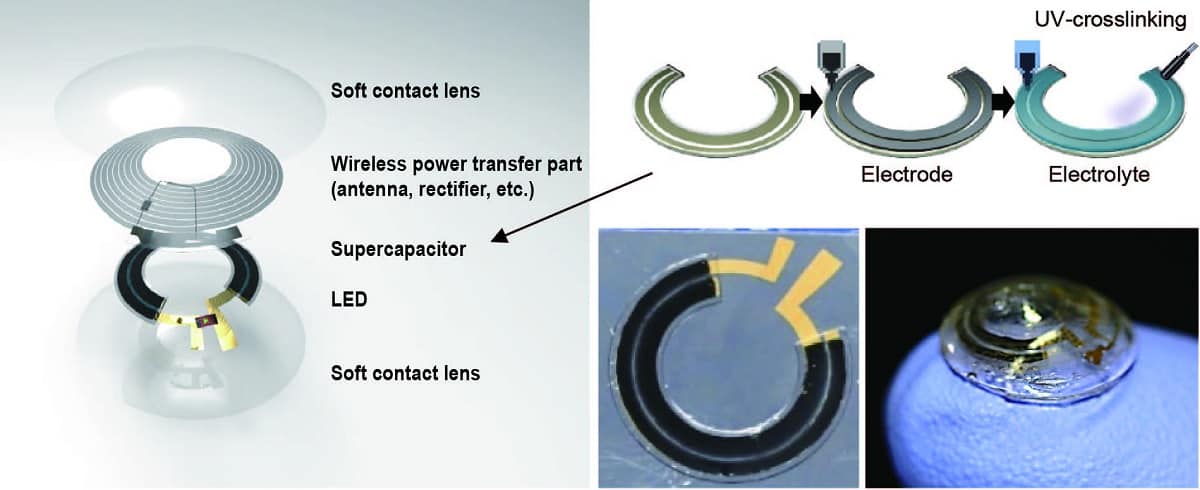
So that the device could be recharged wirelessly, on top of the supercapacitor the team deposited an antenna consisting of an array of electrospun silver nanofibres (around 400 nm in diameter) and electrosprayed silver nanowires (15–25 nm in diameter). They fabricated a rectifier for the antenna conventionally using a silicon wafer, which made up the one rigid component in the lens.
The researchers found that the smart lens survived repeated cycles of flexing, and could withstand stretching of up to 30% in two axes simultaneously. In trials with rabbits and a human subject, the device proved comfortable and safe, maintaining a stable temperature during wireless charging and when used to power an integrated light-emitting diode.
The team’s results are an encouraging demonstration of what’s possible, but don’t expect to be wearing smart contact lenses any time soon. For one thing, their supercapacitor just doesn’t have the endurance to handle the power demands of a realistic device.
“Our integrated supercapacitor is eligible for electronic devices which need a fast power supply in a few minutes,” says Lee. “For devices with longer working times, high-energy-density batteries are required, for which further studies are needed.”


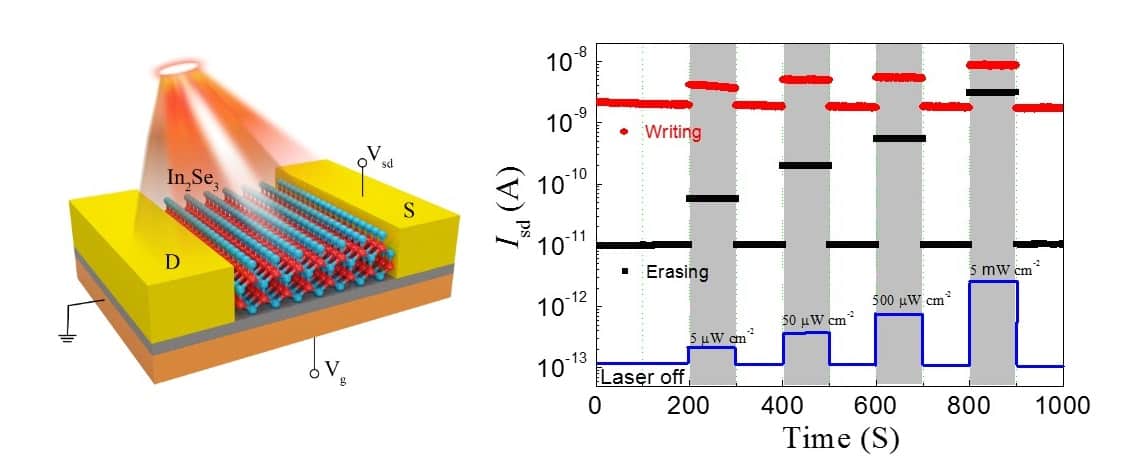
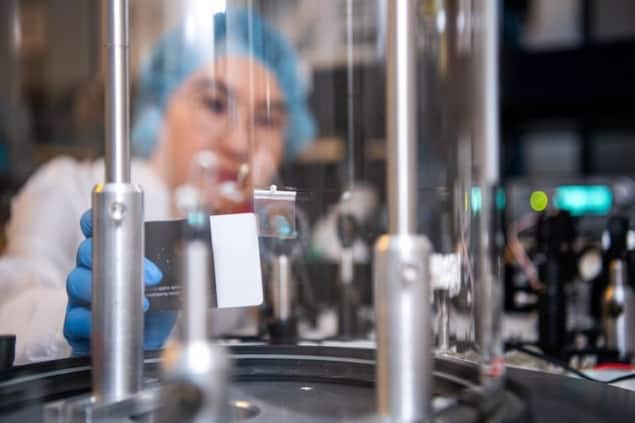
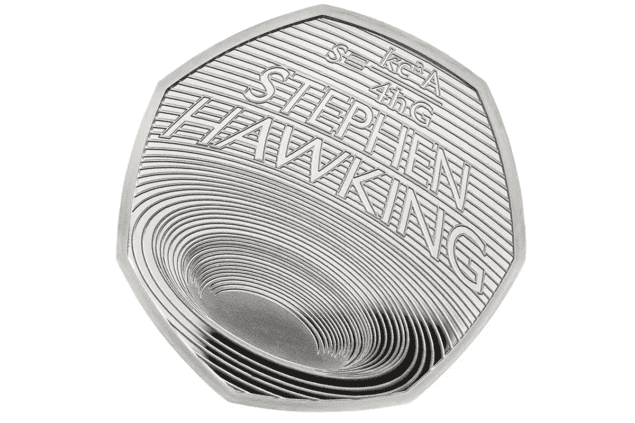

![precursor molecule C24O6, intermediates C22O4 and C20O2 and the final product cyclo[18]carbon C18](https://physicsworld.com/wp-content/uploads/2019/08/kaiser1HR-1200.jpg)
